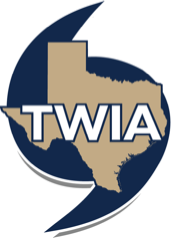To be eligible for TWIA windstorm insurance, some properties must also be covered by flood insurance (which TWIA does not provide). TWIA strongly recommends all policyholders purchase flood insurance. However, it is only required when certain conditions are met.
When Flood Insurance Is Required
Flood insurance is required when all three of the following conditions are met:
- Condition 1: Any part of the property is located in a V, VE, or V1-V30 flood zone, as defined by the National Flood Insurance Program (NFIP).
- Look up flood zones by property address on the FEMA website.
- Properties located in V, VE, or V1-V30 flood zones have an increased chance of flooding from coastal storm waves and storm surge.
- Condition 2: Flood insurance is available for the property from the NFIP.
- Condition 3: The structure is constructed, altered, remodeled, or enlarged after September 1, 2009.
- This does not include maintenance or repairs, unless the maintenance or repair process is used as an opportunity to alter, remodel, or enlarge the structure.
- See examples below.
The flood insurance requirement is mandated by law in the Texas Insurance Code Chapter 2210 and TWIA’s Plan of Operation.
Examples: Projects that Do and Do Not Trigger the Requirement
| Do NOT Trigger the Requirement | Do Trigger the Requirement |
|---|---|
|
|
*Will require a windstorm Certificate of Compliance.
Windstorm Certificates of Compliance (WPI-8/WPI-8-E)
Many projects that don’t trigger the flood insurance requirement will still need a Certificate of Compliance. These certificates verify that the structure meets applicable building codes and can withstand high winds and hail. They are also a TWIA eligibility requirement.
The Texas Department of Insurance (TDI) issues all Certificates of Compliance. Learn more about Windstorm Certification on our dedicated webpage or on the TDI website.
How to Get a National Flood Insurance Program (NFIP) Policy
Contact your insurance agent to get an NFIP flood insurance policy. Most insurance companies can write one for you. If you need help finding an agent who does, visit www.floodsmart.gov/flood-insurance-provider.
Do not wait to purchase flood insurance. It takes 30 days for a flood insurance policy to go into effect after you purchase it. So, if flooding is forecast for your area and you call your agent to get coverage, it’s already too late. This waiting period applies to most flood insurance policies, not just ones from the NFIP.
Information for Agents
Proof of Insurance
If flood insurance is required, the agent must maintain written proof of flood coverage for the entire policy period and at least five years after submitting an application for TWIA coverage.
Proof of flood insurance may include either of the following:
- Copy of the flood insurance policy Declarations page
- Copy of the flood insurance policy
If flood insurance is unavailable through the NFIP, proof of this fact may include written or electronic documentation from the NFIP or the participating “Write Your Own” insurance company.
Flood insurance is not required for insurable corporeal movable property that is located on or above the third floor of a structure.
Amount of Coverage
The minimum amount of flood insurance must be equal to or greater than whichever of the following is smallest:
- 90% of the amount of insurance for the property insured by TWIA, if NFIP coverage is available on a replacement cost basis.
- 90% of the Actual Cash Value of the property insured by TWIA, if NFIP coverage is not available on a replacement cost basis.
- The maximum amount available under the NFIP for the property.
Learn More
Information about flood insurance and flood risks is available at www.floodsmart.gov. This website is provided by the NFIP and FEMA.
To look up flood zones by property address, visit the FEMA website.


